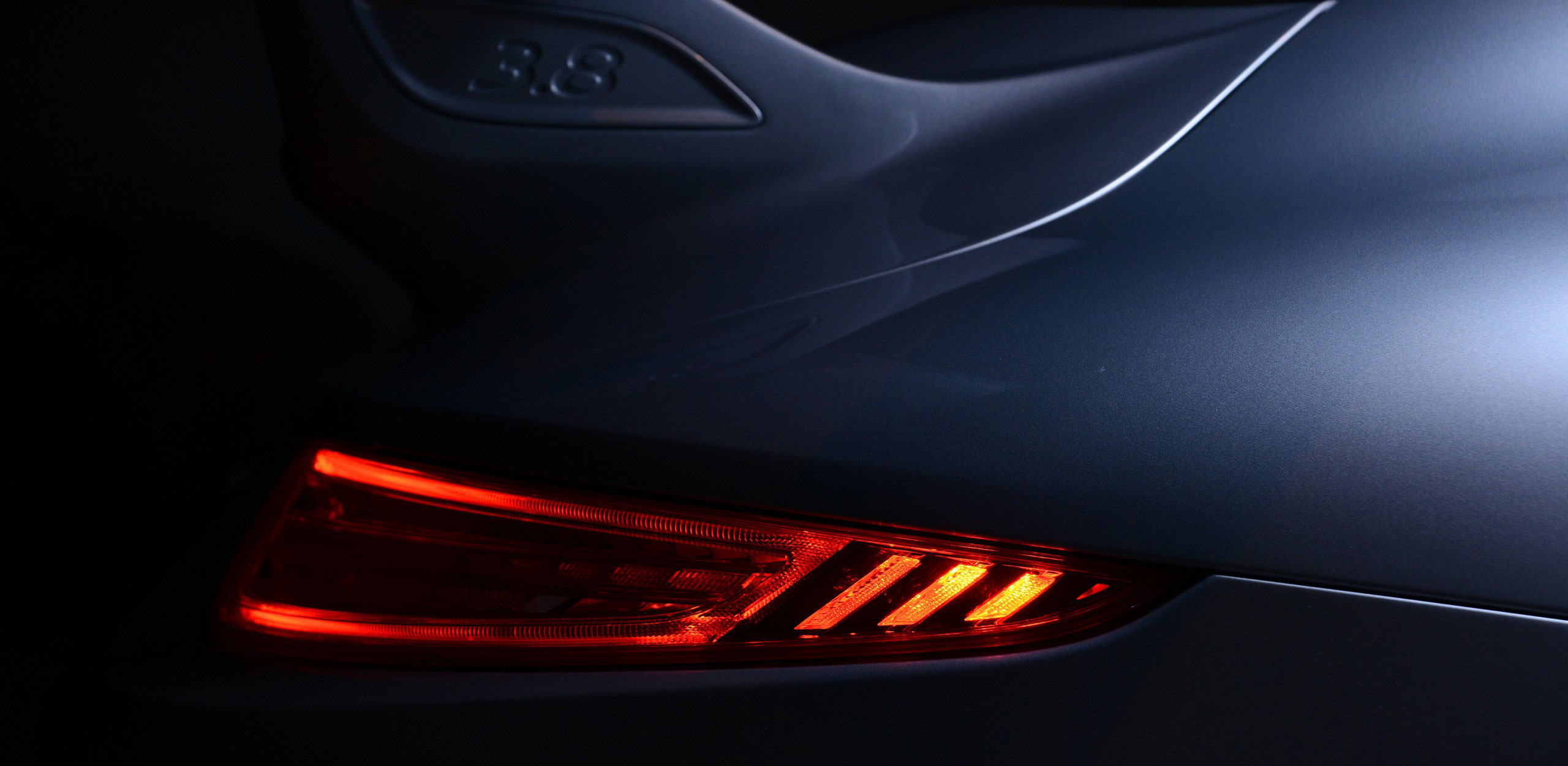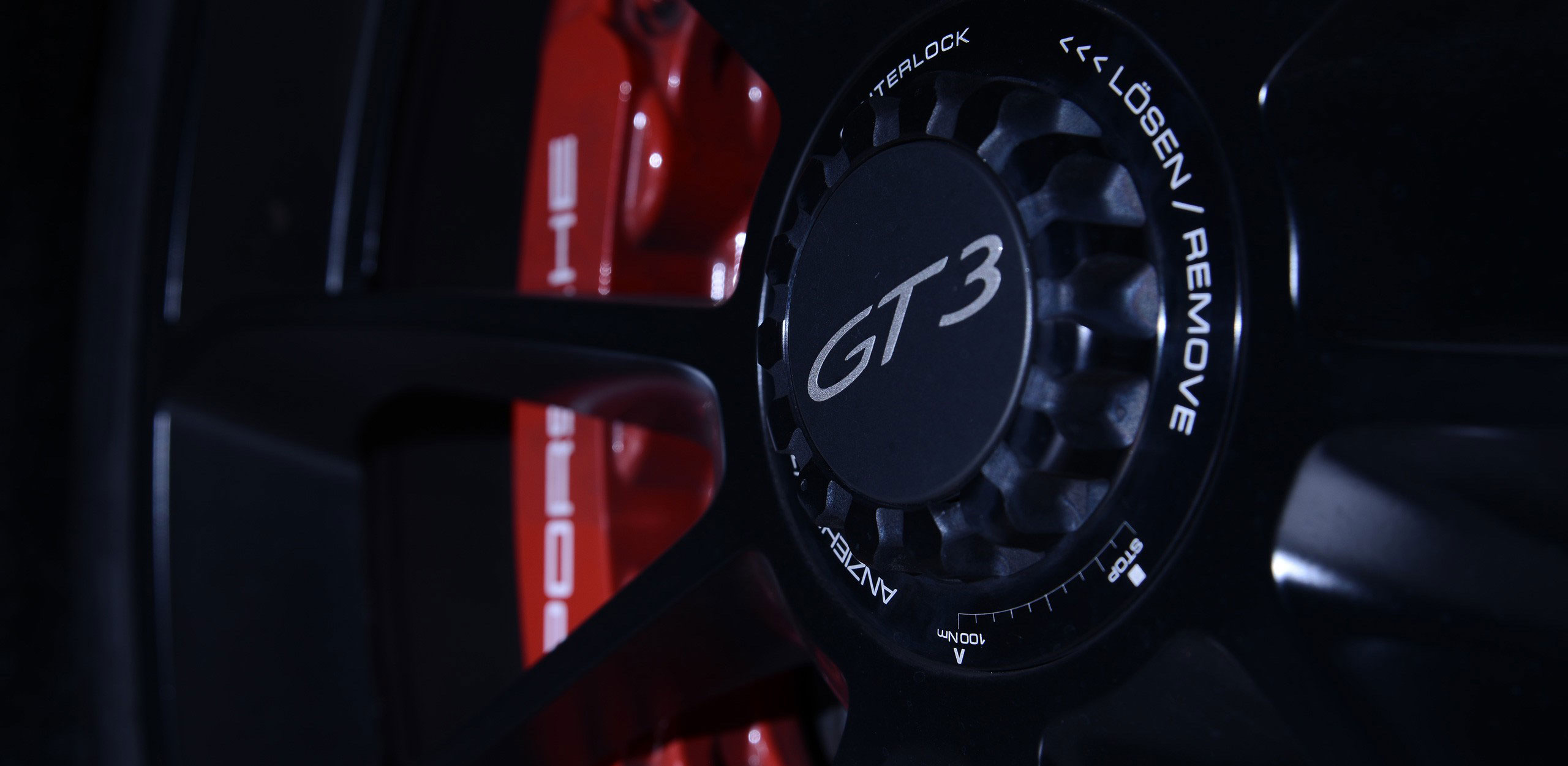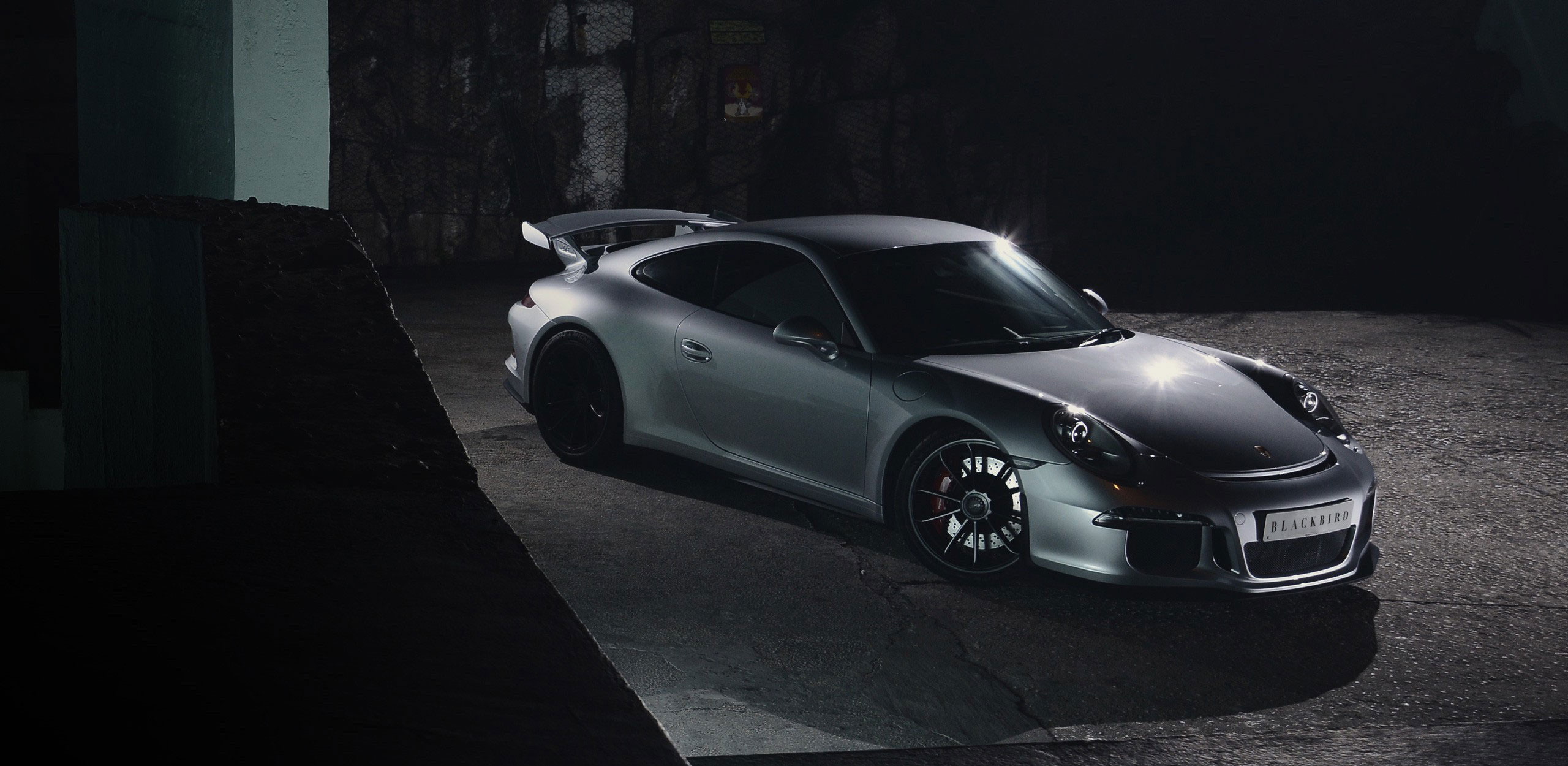
Three years ago, the 991 impressed us all with a revolutionary extended wheelbase and a compliant suspension that enhanced driving comfort without diminishing the original 911’s sporty character. Naturally, it was only proper for us to wait in anticipation for their race inspired GT3 variant – sadly delayed by a global recall.
Roll forward to present day and the 911 GT3 has finally arrived, safe and sound in our hands bar a few notable changes: the traditional manual box was replaced by the state-of-the-art PDK transmission; the naturally aspirated 3.8-liter flat six now pushes the nether regions of 9,000 rpm to offer a wider power band and more radical top range performance; a new four-wheel steering system for even sharper control – the new 911 GT3 comes forth with tremendous technological breakthrough but stays loyal to its essence born on the race track.
The 911 GT3 has long proven its place amongst the 911 variants – born as a street legal race car, it retains a certain amount of daily drivability – yet the radical track inspired performance differentiates it clearly from the Carrera and Turbo models. It’s no surprise that most would have preferred the traditional 6-speed manual transmission to be entirely in control or if only to continue the legacy with the GT3’s predecessors – after all, don’t all GT3 drivers change their own gears? However, in a bold move Porsche decided that the 7-speed PDK dual-clutch transmission will from now on become the mandatory (and only) option. Sad news for those who insist on 100% mechanical operation, but as they say – time… and technology waits for no man.
The PDK is so quick, precise and sophisticated that it becomes almost irrelevant how good you were with the stick. Turn it to Sport and it is programmed to delay upshifting to allow the engine to rev up to the red line. It then engages the next gear in a split-second, pulling the rev counter down by 2,000 rpm before hurtling to the 9,000 rpm limit as you keep the gas pinned.

The PDK’s manual operation is equally intoxicating. The sleek metallic paddles behind the wheel gives the GT3 a hi-tech and mechanical feeling and inside the cockpit, you can hear the low-frequency tune of the running gears. As you accelerate and engage the right hand lever it immediately sparks that brutal sound of clutch and gear meshing; ease off the throttle and downshift before a corner, the engine revs and roars angrily accompanied by intense burbles from the exhaust, all channeled through from the engine bay into the cockpit. This 911 GT3 is truly a street legal race car that showcases far more of its racing pedigree than the regular Carrera and Turbo models.
Yes, the driving sensation of the sophisticated PDK is, by comparison, less involving than the 6-speed manual, but in its place it promotes a much higher transmission efficiency and allows you to keep both hands on the wheel while attacking corners. With the PDK, you can leave it all to its Sport mode and watch it emulate human driving logic quicker and smarter than your own thoughts. It triggers downshifting promptly as it senses deceleration or braking; or kick downs to 3rd or even 2nd to facilitate acceleration once the throttle is wide open – The efficiency of PDK is so evident that it has become the major model for Porsche to challenge the lap record at Nurburgring in recent years.
The naturally aspirated engine is another reason for 911 GT3 to be considered as one of the frontrunners in the current sports car arena. The new 3.8-liter direct-injection flat six unit generates a 475hp maximum power figure without the aid of forced induction and sets a limit at 9,000 rpm, 2,000 rpm higher than the 911 Turbo with the low inertia, high revving character achieved by various titanium and forged engine components. As you accelerate and once the engine enters the seat clinching 5,000rpm+ range it gives you what feels like unlimited torque throughout the rest of the curve, allowing you to floor the throttle to unleash maximum power.
Although the low-end torque of the new GT3 is by no means close to its Turbo cousin, it rapidly picks up speed in a linear manner much alike larger displacement engines, thus making it easier to wrestle the 475 ponies into control at the rear wheels. The engine’s high strung character kicks into life as it heads past 5,000 rpm where it finally begins to come into its own – the feeling of how far you want to take it from there is simply up to your own limits.

Naturally, Porsche knew that with a great power plant alone the new GT3 wouldn’t be able to meet the modern supercar standard, so handling upgrades were implemented to cope with the increase in power. Visible changes include the wide body borrowed from the Carrera 4, wide enough to accommodate the oversized 305 tire track while under the body, something less visible but more advanced was added to the drive wheels: the new four-wheel steering system. At speeds below 50 km/h, the rear wheels turn in opposite direction to the front wheels, offering the agility of a short wheelbase vehicle; during high-speed cornering, the four wheels turn in the same direction so that the nose points straight to the apex as you turn in. The operation is hardly noticeable in the driver’s seat but if you open the window and listen carefully, you can just about hear the operation of the rear wheel steering system… when it’s not drowned out by the brutal exhaust note.
The Carrera, Turbo and GT3 models are all remarkable models in the current 911 family. With a more spartan feel, the new GT3 accurately re-interprets the racing heritage of the latest 911 as opposed to the grand tourer style of the Carrera, and the distinctive high-revving performance of the naturally aspirated engine differentiates it from the more violent turbo models. Driving the new GT3 is an intensive, palm-sweating experience that heightens all your senses with the same sensation of a track car; an offering that is absolutely, uniquely Porsche in all regards. If this is a sign of what’s to come, then this is a spark that shines bright for the future. What more can we say? Bring on the RS.